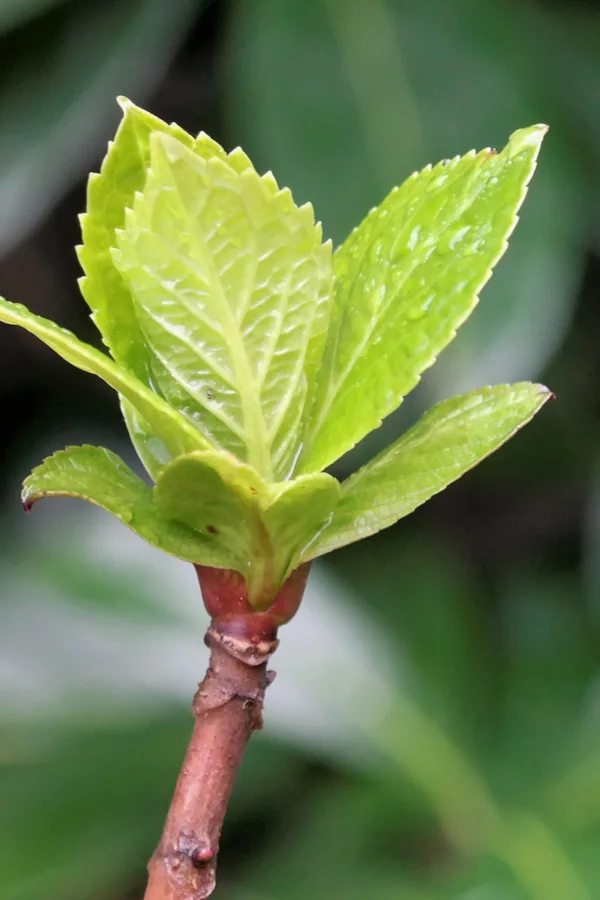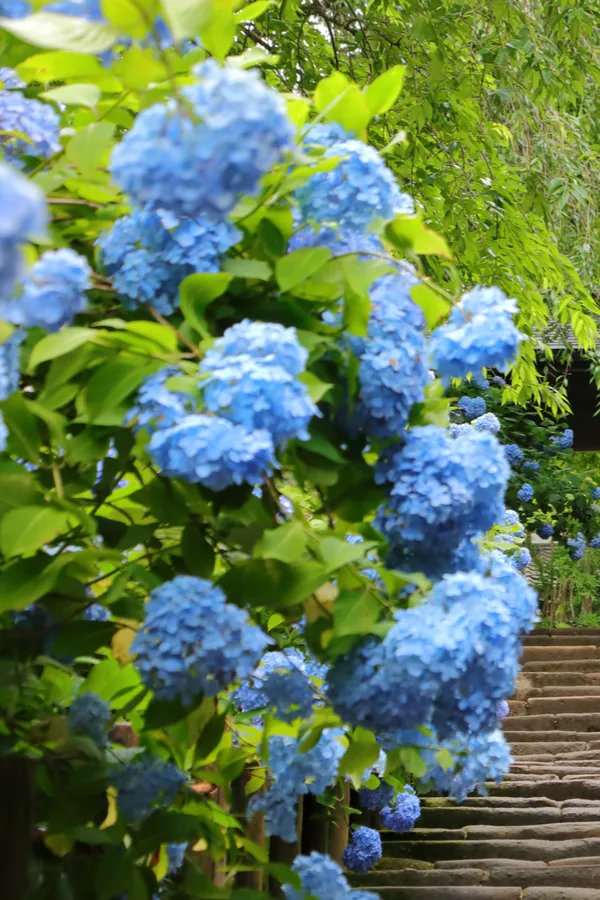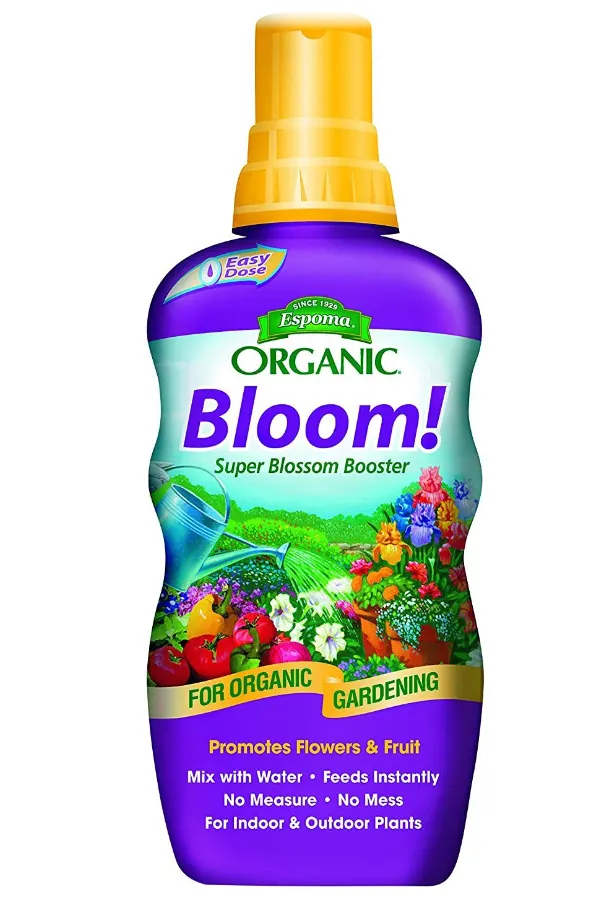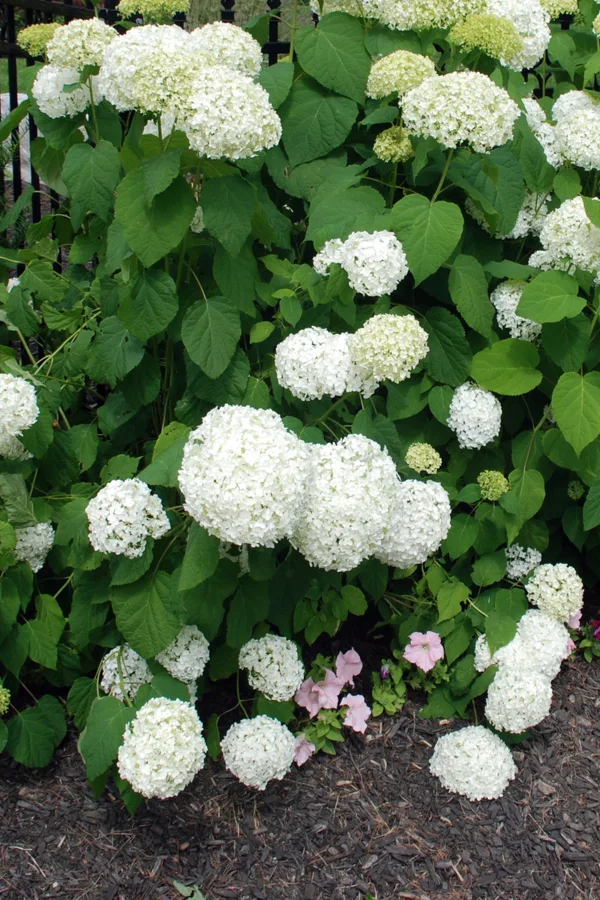When it comes to spring hydrangea care, what you do and don’t do in the early months of the growing season can have a big impact on the health of your plant – and for helping your hydrangea bloom bigger and better than ever.
Hydrangeas increase in popularity with each passing year. With a near dizzying array of varieties and colorful blooms to choose from, it’s easy to see why they are in such high demand.
But as beautiful and interesting as hydrangeas can be, they can be frustrating at times for gardeners. Especially when they fail to flower to their full potential – or fail to bloom at all!
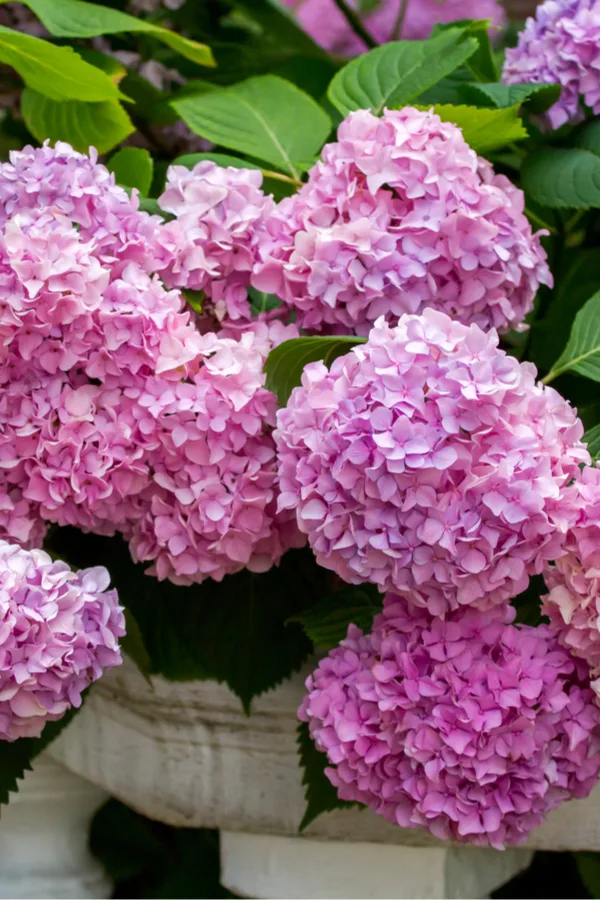
The good news is that diagnosing and solving a hydrangea’s blooming problem isn’t as difficult as a gardener might think. In fact, most Hydrangea’s flowering issues revolve around just 3 simple factors – pruning, fertilizing and mulching.
Luckily, all three can be addressed in the early spring with ease. With that in mind, let’s take a look below at how to properly care for your hydrangeas, and how to get them to bloom bigger and brighter than ever this summer!
Spring Hydrangea Care – The Simple Secrets To Blooming Success!
#1 – To Prune Or Not To Prune Hydrangeas In The Spring
Believe it or not, a large portion of hydrangea blooming issues have more to do with improper pruning than actual plant health.
For many gardeners, late fall or spring pruning is a ritual to keep foliage and plants in check for their perennials.
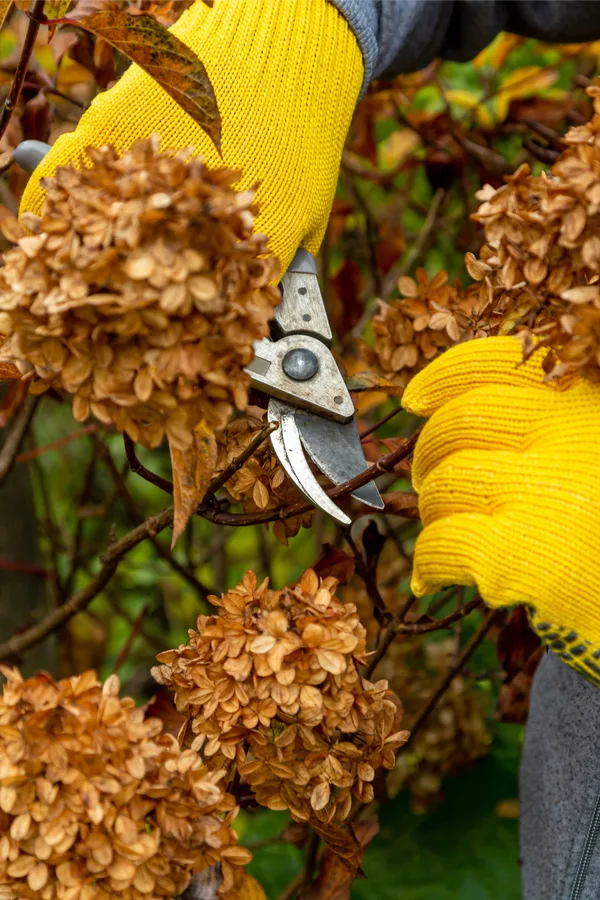
But for a large portion of hydrangeas, late fall or early spring pruning can spell disaster for blooms – as in eliminating most or all of them! Early summer blooming hydrangeas such as Oakleaf, Bigleaf, Climbing and Mountain varieties should never be pruned in the early spring, winter, or late fall.
Unfortunately, summer blooming varieties produce the following year’s bloom on old wood. By waiting until late fall or early spring to cut them back, you are removing all of the plant’s future blooms.
Instead, early summer blooming hydrangeas should be pruned back right after they complete their bloom cycle in the early summer. This allows new growth and new bloom buds to form. And by the following spring, they are ready to start powering up for big blooms.
An Exception To The No Prune Spring Rule
There is an exception to the early spring / late fall “no-pruning” rule. And that exception has to do with Smooth and Panicle hydrangea varieties.
Unlike Oakleaf, Climbing and Bigleaf hydrangeas, these two types produce their blooms in late summer to early fall. In fact, the easiest way to tell if you have either of these two varieties of hydrangeas is if they bloom late in the growing season.
Since these hydrangeas bloom so late, they do not produce their blooms until the following spring on new growth wood. This means you can prune back your plants in late winter or early spring, or as long as the plant has not started to bud and grow.
If the plant does shoot forth new growth before you can prune, simply let it go until the following year. Once growing occurs, you risk removing new blooms for the upcoming season.
#2) Fertilizing -Spring Hydrangea Care
Now that we have pruning out of the way, its time to talk about fertilizing your hydrangeas. Fertilizing is truly one of the most important tasks for creating a strong bloom cycle. But when and how you apply it is the real secret to success!

There are two important times that a hydrangea bush needs power. The first is when it begins to grow in the spring. The second is just before it begins to flower in early summer or late fall, depending on the variety.
Spring Fertilizing – How To Help Hydrangeas Bloom
Early in the spring, either right before or just as the plant is coming out of its dormancy stage, apply an all-purpose, slow release granular fertilizer at the base of the plant.
As a general rule of thumb, use a balanced fertilizer that is in the 5-5-5 to 10-10-10 nutrient range. The 3 sets of numbers refer to the nitrogen (N), phosphorus (P), and Potassium (K) levels in the fertilizer.
Nitrogen helps promote good growth and plant color. Phosphorus, meanwhile, helps a plant fruit and flower strong. Potassium is important as well, as it helps promote strong stems and branches, and helps the plant continue to grow.
By giving them a balance in the early spring, you are helping with all 3 phases in equal portions. This will supply a slow release of nutrients to the plant, helping it to develop strong, healthy foliage as it draws closer to its blooming cycle.
Late Spring / Early Summer Fertilizing – Spring Hydrangea Care
The time to apply the second dose of fertilizer to your hydrangea is right before it begins to bloom. This dose of nutrients is for one purpose and one purpose only – to power up your blooms!
Because of this, it is best to use a liquid fertilizer for this application. Why? because liquid fertilizers deliver nutrients in a fast, easy to consume manor. And that is exactly what your hydrangea needs for power as it puts forth its bloom cycle.
To help summer blooming hydrangeas flower, the second fertilizing should take place in late spring or early summer. For fall blooming varieties, wait until late summer.
Although a balanced liquid fertilizer will do the job, look for a fertilizer that is a bit higher in phosphorus for this application. Why? Because the plants will use the phosphorus for bigger, brighter and more prolific blooms. Espoma has an organic liquid fertilizer that works perfect for this! Product Link : Espoma Organic Bloom Booster
Mulching – Spring Hydrangea Care
Last but not least, don’t forget the mulch! Mulching your hydrangeas early in the spring is extremely important, and for several reasons.
First, it help regulate the soil temperature, which keeps roots comfortable and strong. A heavy application of mulch also helps keep competing weeds at bay, which can steal valuable energy and moisture from the soil.
But last, and certainly not least, mulch helps to conserve moisture in the soil. Moisture that the roots need to absorb and soak in the nutrients that will provide power to the blooms.
As for the best mulches to use, hardwood bark, shredded hardwood, and even pine needles are all good choices. The real key is to get the mulch down early in the spring to start providing your hydrangea with protection.
Conclusion – Spring Hydrangea Care, How To Help Hydrangeas Bloom
Getting your hydrangeas to bloom and bloom big all starts with pruning them at the right time. Remember, early summer blooming hydrangeas should be pruned right after they bloom. Late summer / early fall blooming hydrangeas should be pruned before they come out in the spring.
To maximize your flower power to its fullest potential, feed your hydrangeas with fuel in the early spring and right before they flower. And finally, mulch your hydrangeas early to conserve moisture and keep competing weeds away.
Here is to getting the biggest, most beautiful blooms of all from your hydrangeas this year! Happy Gardening, Jim and Mary
Jim and Mary Competti have been writing gardening, DIY and recipe articles and books for over 15 years from their 46 acre Ohio farm. The two are frequent speakers on all things gardening and love to travel in their spare time.
As always, feel free to email us at thefarm@owgarden.com with comments, questions, or to simply say hello! You can sign up for our free email list in the subscribe now box in the middle of this article. Follow us on Facebook here : OWG Facebook. This article may contain affiliate links.

